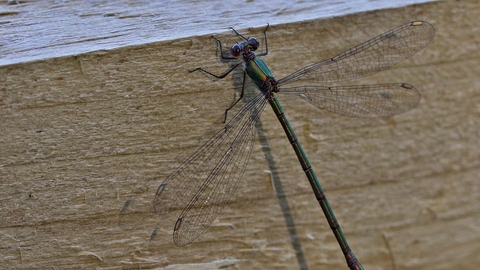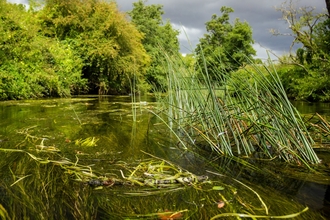
©Margaret Holland
Willow emerald damselfly
Scientific name: Chalcolestes viridis
A recent colonist to South East England, the metallic-green Willow emerald damselfly spends much of its time in the willow and alder trees that overhang ponds, lakes and canals.

